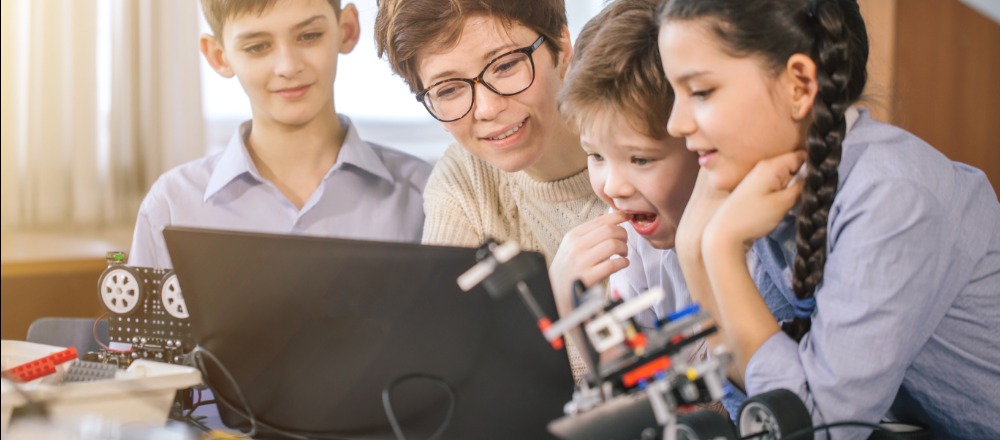Using Project-Based Learning in Primary and Secondary Schools

Using Project-Based Learning in Primary and Secondary Schools: Engaging Students in Hands-On, Real-World Projects
Project-Based Learning (PBL) is an instructional approach that empowers students to learn by engaging in meaningful, hands-on projects. This method not only fosters deeper understanding of academic content but also enhances critical thinking, collaboration, and problem-solving skills. By immersing students in real-world scenarios, educators can create a dynamic learning environment that motivates and inspires students in both primary and secondary schools.
In this blog, we will explore the benefits of project-based learning, effective strategies for implementation, and tips for overcoming potential challenges in the classroom.
1. Understanding Project-Based Learning
Project-Based Learning is an active learning method where students gain knowledge and skills by working on a project over an extended period. Projects can range from science experiments to community service initiatives, allowing students to explore topics that interest them while applying what they learn in a practical context.
- Focus on Inquiry: PBL encourages students to ask questions, research, and explore solutions, promoting a sense of curiosity and ownership over their learning.
- Real-World Relevance: By connecting projects to real-world issues, students can see the importance of their work and understand its impact on the community.
Tip: Begin with a project that aligns with students' interests to spark enthusiasm and engagement.
2. Benefits of Project-Based Learning
Implementing PBL in the classroom offers numerous advantages for both students and teachers:
- Enhanced Engagement: Students are more motivated and engaged when working on projects that are relevant and meaningful to them.
- Development of 21st-Century Skills: PBL fosters critical thinking, collaboration, and communication skills, preparing students for future challenges.
- Interdisciplinary Learning: Projects often integrate multiple subjects, providing a holistic educational experience that reflects real-world connections.
Tip: Highlight the relevance of projects to students’ lives to increase their investment in the learning process.
3. Designing Effective Projects
Creating impactful projects requires careful planning and consideration of various factors. Here are some steps to guide you:
- Identify Learning Objectives: Clearly define the educational goals of the project, ensuring they align with the curriculum standards for your grade level.
- Choose a Compelling Topic: Select a topic that captures students’ interest and has real-world implications. Encourage students to brainstorm ideas and vote on their preferred topics.
- Determine Project Scope: Establish a clear timeline and outline the project’s components, including research, collaboration, and presentation elements.
Tip: Involve students in the planning process to foster a sense of ownership and investment in their learning.
4. Facilitating Collaboration and Teamwork
Collaboration is a key component of project-based learning, as it mirrors real-world scenarios where teamwork is essential.
- Assign Roles: Encourage students to take on different roles within their project teams, promoting responsibility and accountability.
- Foster Communication: Implement strategies to help students communicate effectively, such as regular team meetings or collaborative online platforms.
Tip: Encourage peer feedback throughout the project to build a supportive learning environment.
5. Integrating Assessment Strategies
Assessment in project-based learning should focus on both the process and the final product. Consider the following strategies:
- Formative Assessments: Use checklists, rubrics, and peer assessments throughout the project to gauge student progress and provide feedback.
- Summative Assessments: Evaluate the final project using a rubric that encompasses both content knowledge and collaboration skills.
Tip: Involve students in creating assessment criteria to enhance their understanding of expectations.
6. Overcoming Challenges in Project-Based Learning
While PBL can be highly effective, there may be challenges along the way. Here are some common obstacles and strategies to overcome them:
- Time Management: Projects can be time-consuming, so it’s essential to create a structured timeline and set interim deadlines to keep students on track.
- Resource Availability: Ensure you have the necessary resources and materials to support projects. This may involve seeking partnerships with local businesses or community organisations.
Tip: Be flexible and ready to adapt the project as needed based on students' progress and resource availability.
7. Showcasing Student Work
Sharing students’ work not only celebrates their efforts but also provides an opportunity for reflection and feedback.
- Organise a Presentation Event: Host a showcase where students can present their projects to peers, parents, and the wider community. This enhances their confidence and public speaking skills.
- Utilise Digital Platforms: Consider using social media or school websites to highlight student projects and share their achievements with a broader audience.
Tip: Encourage students to reflect on their learning experiences after the project is complete, focusing on what they learned and how they worked together.
8. Continuous Improvement of PBL Practices
Project-based learning is an evolving practice. Regularly reflect on your implementation to enhance future projects:
- Gather Feedback: Solicit feedback from students about their experiences and use it to inform future project designs.
- Professional Development: Seek out workshops, resources, or communities focused on project-based learning to expand your knowledge and skills.
Tip: Join online forums or local networks where educators share best practices and resources for PBL.
Conclusion
Using Project-Based Learning in primary and secondary schools provides a dynamic approach to education that engages students in hands-on, real-world projects. By understanding the benefits of PBL, designing effective projects, facilitating collaboration, and showcasing student work, educators can create an enriching learning environment that promotes deeper understanding and essential life skills.
Are you currently using project-based learning in your classroom?





